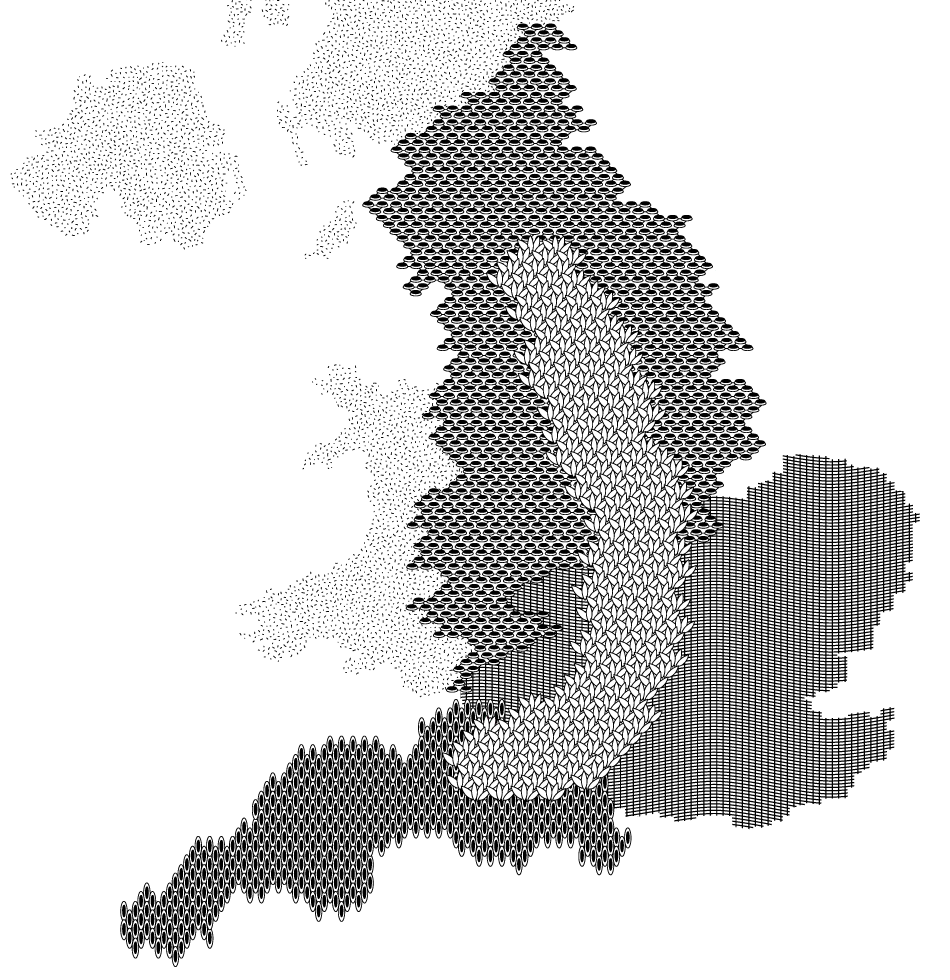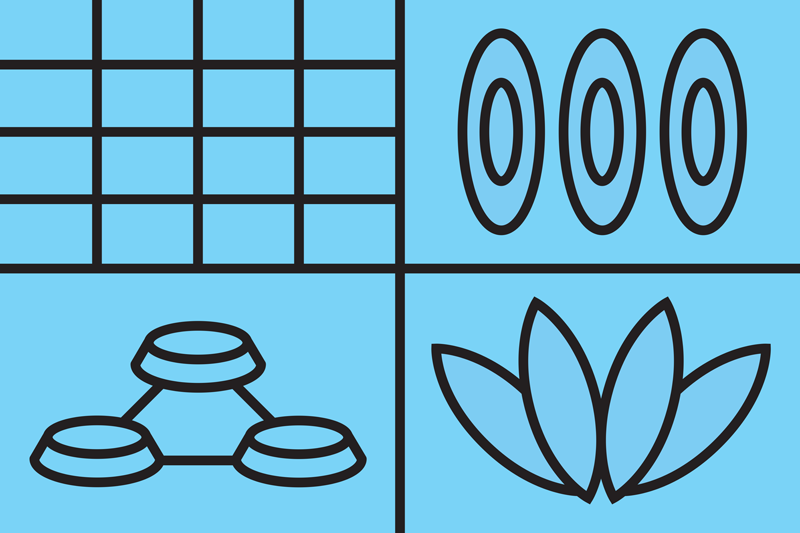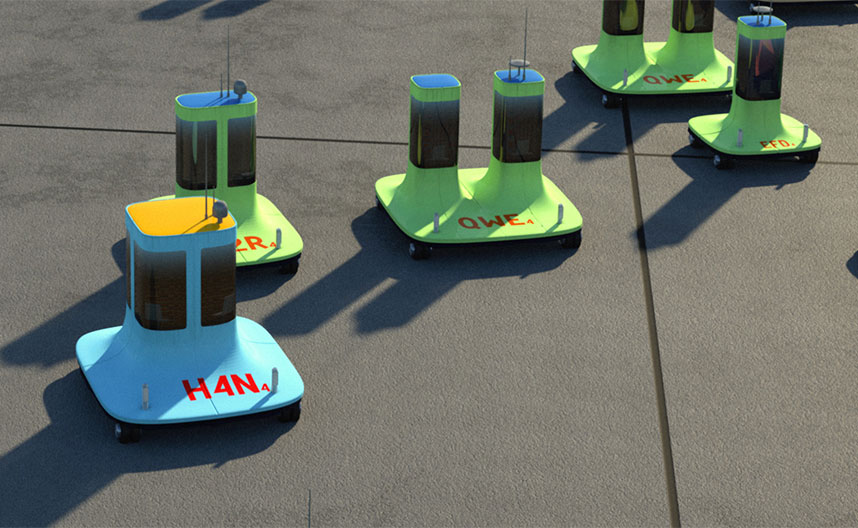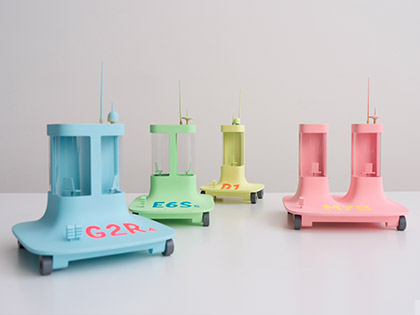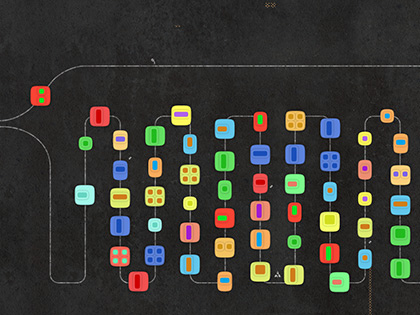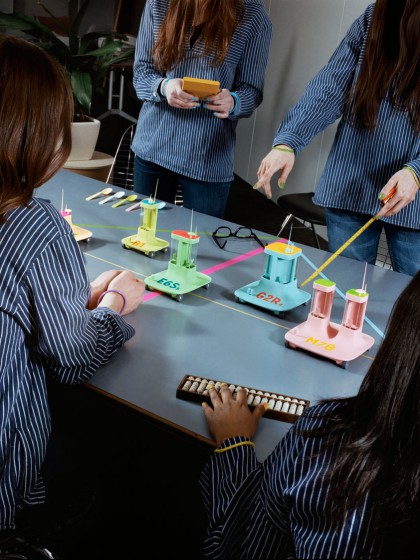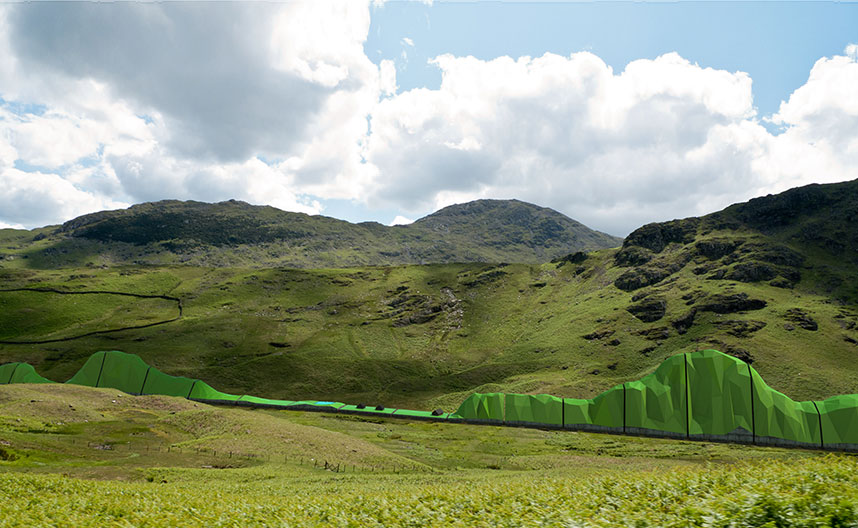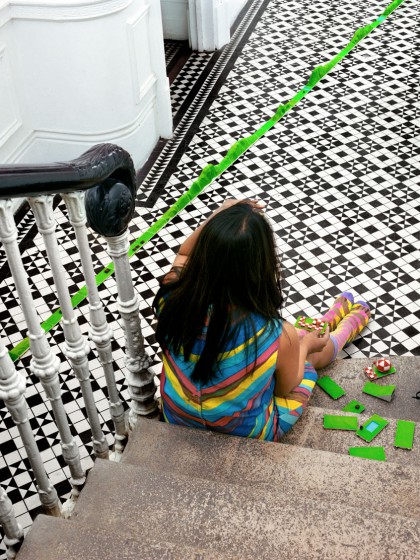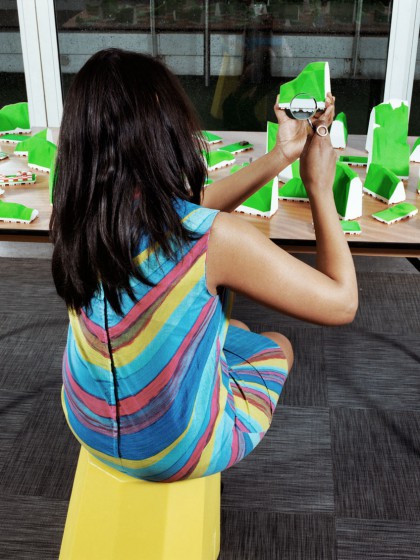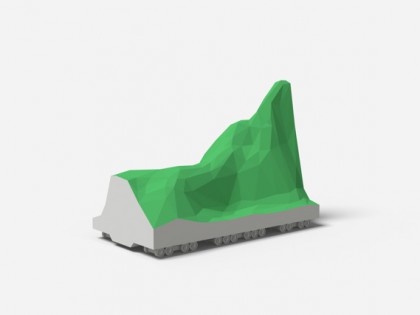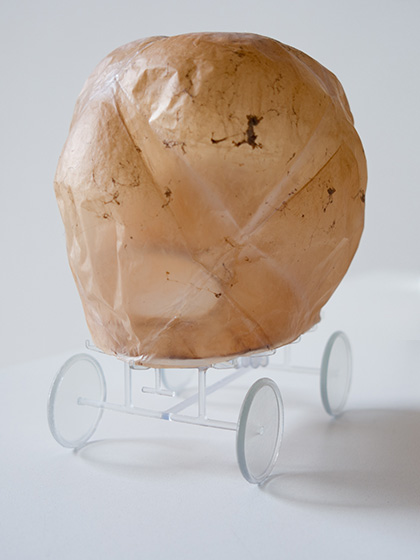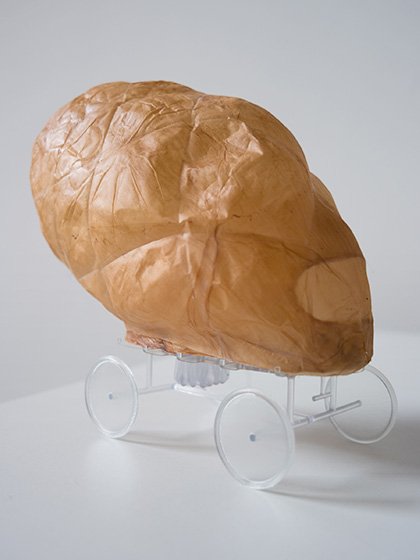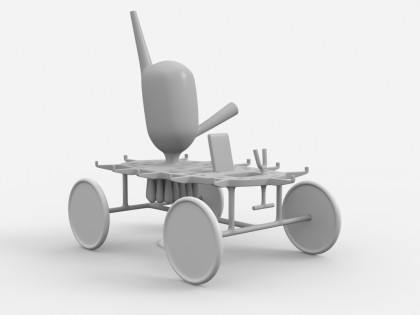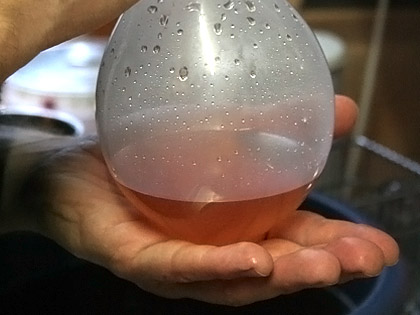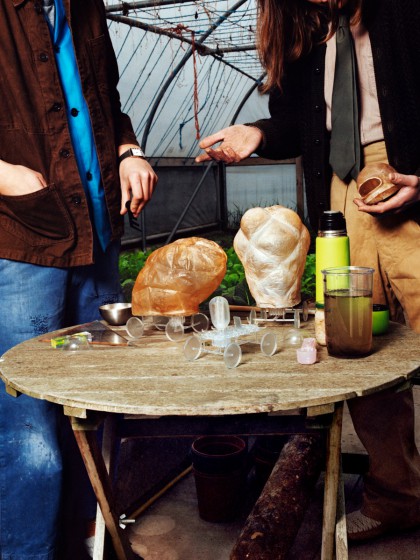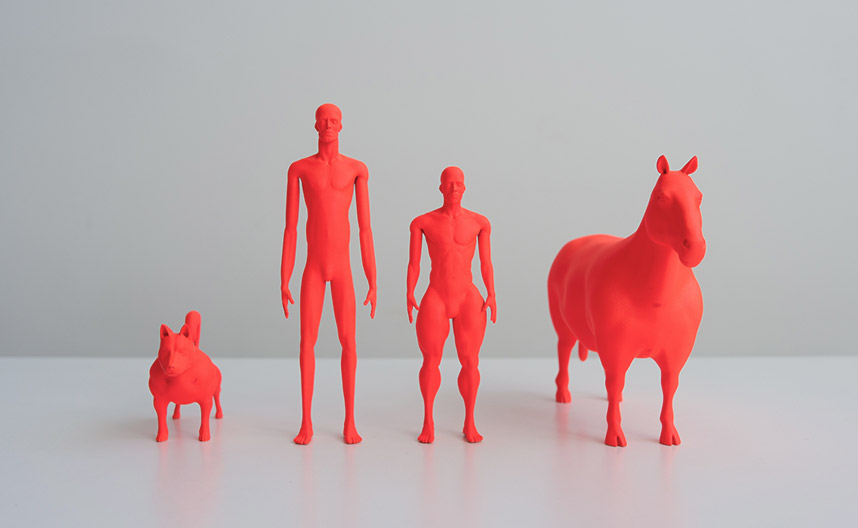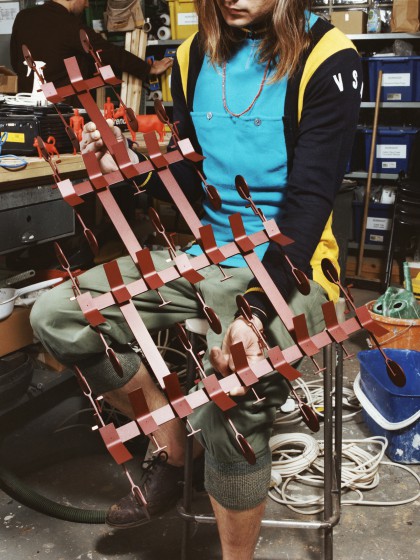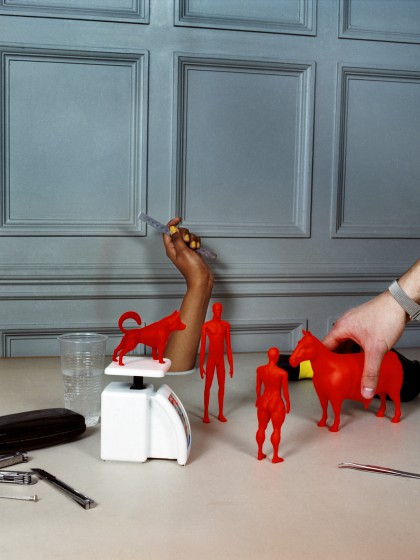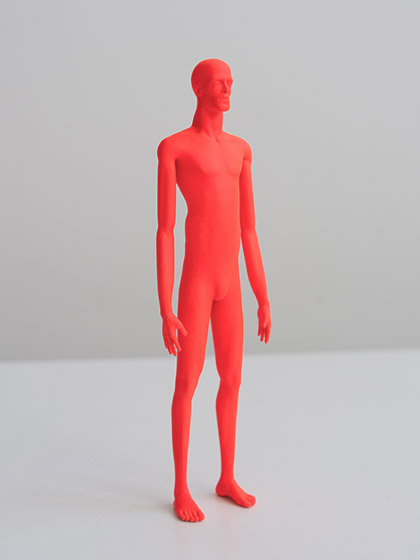CYCLIST, BALLOONIST, PITSKY AND HOX
The family or clan is the most important social unit. Families evolve around particular forms of transport using a combination of genetic modification, training and the passing down of knowledge and skills from generation to generation. A distinctive physique is associated with each clan, and is a matter of pride. Cyclists have well developed thighs, while Balloonists are tall and willowy and so on.
As well as modifying themselves, Anarcho-evolutionists have developed new forms of animal to satisfy their needs. The Hox is a mix of horse and ox, a hybrid animal bred to move heavy loads and pull carriages, while the Pitsky is a combination of pit bull terrier and husky, designed for pulling smaller loads and personal protection.
VERY LARGE BIKE (VLB)
The Anarcho-evolutionist’s world is a world without cars. Their transport is either human, wind or (genetically modified) animal powered. The vehicles are designed around the principle of organisation without hierarchy and embody their social order and values. Sociability and co-operation are more important than speed and competitiveness.
The Anarcho-evolutionists travel in groups, each doing what they are best at, and each is responsible for a bit of the vehicle. The Very Large Bike (VLB) is designed for travelling long distances in groups, pooling effort and resources. Travelling on abandoned motorways, it is gently steered by leaning, each person knowing from experience and practice just how much is required of them. While the elderly, young and weak are not able to pedal and are carried along by the others, their role is that of expert singers and story tellers, providing entertainment and motivation to the others.
pinterest.com/a3sth3t1cs/anarcho-evolutionists
